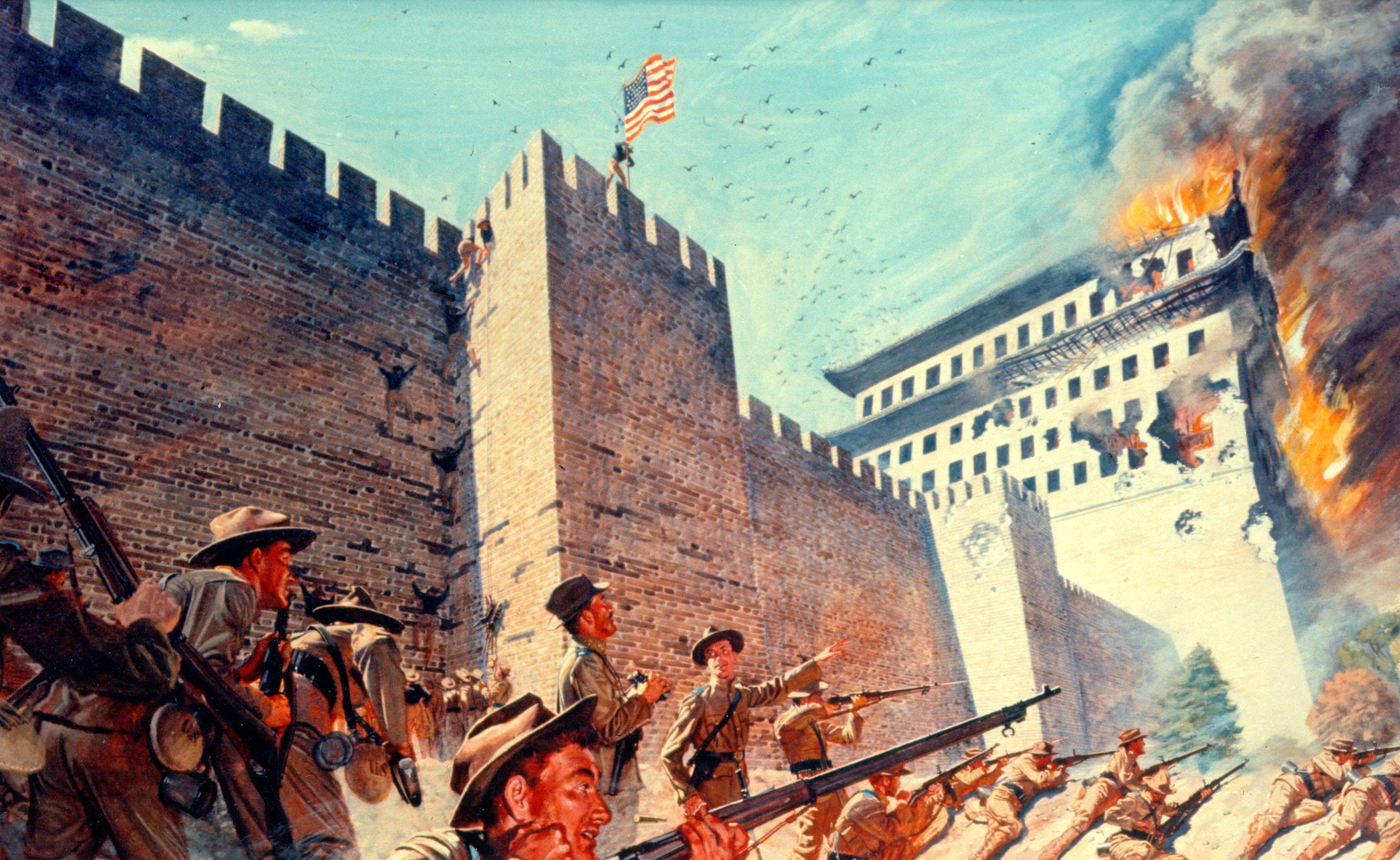June 21 in U.S. military history
1900: (Featured image) The Chinese empress Cixi formally declares war on foreign powers. 100,000 members of the nationalist “Righteous and Harmonious Fists” movement (nickamed the “Boxers” by the British) launch attacks against Christian and foreign targets in Peking’s (modern-day Beijing) Legation Quarter. The siege lasts nearly two months before Western reinforcements arrive. Marine legend Dan Daly will earn his first of two Medals of Honor — one of only two men to accomplish the feat — when he single-handedly kills some 200 Boxers.
1916: During Gen. John J. Pershing’s Punitive Expedition into Mexico to capture or kill Pancho Villa, Buffalo Soldiers of the 10th Cavalry Regiment clash with — and defeat — a Mexican Army force at Carrizal. The incident nearly puts the two countries on a war footing, but with the “War to End All War” raging across the Atlantic, tensions would soon dissipate.
1921: Army and Navy aircraft attack the former German battleship Ostfriesland, sinking the massive vessel and giving support to famed World War I aviator Brig. Gen. William “Billy” Mitchell’s theory that dreadnought battleships could be easily sunk by planes and are taking up too much of the military budget.
1942: The Japanese submarine I-25 surfaces at the mouth of the Columbia River and targets Fort Stevens (Ore.). The sub’s gun inflicts virtually no damage in the only bombardment of a stateside U.S. military installation.
Halfway across the Pacific, PBY Catalina crew members rescue two downed aviators floating in the ocean, over 300 miles north of Midway. The men have been drifting since their TBD Devastator torpedo bomber went down during the Battle of Midway on June 4.
1945: After 82 days of the bloodiest fighting during World War II, the last remaining Japanese resistance on Okinawa collapses. Gen. Mitsuru Ushijima, commander of the Japanese forces on the island, commits ritual suicide. The Battle of Okinawa is over. Over 100,000 Japanese soldiers perish and 12,500 American Marines, soldiers, and sailors are killed in combat. Kamikaze attacks account for the sinking of dozens of American ships.
1969: Following two days of artillery attacks, a 600-man North Vietnamese Army force assaults the American combat base of Tay Ninh, 50 miles northwest of Saigon. After two days of fighting, 196 NVA soldiers and ten Americans lay dead.
